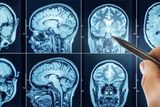Now Reading: Can Brain Scans Reveal Your True Rate of Aging?
-
01
Can Brain Scans Reveal Your True Rate of Aging?
Can Brain Scans Reveal Your True Rate of Aging?

Quick Summary
- A new algorithm, DunedinPACNI, uses brain MRI images to calculate biological age and predict overall body aging.
- Developed using data from the Dunedin Study, a 50+ year-long research project involving more than 1,000 participants in New Zealand.
- The algorithm measures aspects of brain structure and produces a score indicating whether an individual’s biological age is higher or lower than their chronological age.
- Findings revealed that individuals with higher DunedinPACNI scores exhibited signs of faster aging, including weaker strength, slower movement, poorer cognitive performance, and greater health issues at the age of 45.
- The tool is designed to predict risks for diseases such as heart disease, stroke, dementia, and COPD.
- it is indeed free for clinical use and may become part of routine health check-ups in the future. Researchers hope it will be as common as mammograms or colonoscopies.
Read More: Vital for Bone Health: Vitamin D May Also Slow Aging at the Cellular Level
Indian opinion Analysis
The advancement of DunedinPACNI highlights meaningful technological advancements at the intersection of neuroscience and preventive healthcare. While this innovation stems from research overseas (specifically New Zealand), its implications resonate globally-including in India-where personalized medicine could revolutionize aged care. Early detection tools like this could allow physicians to identify accelerated biological aging patterns early on.
For India’s multi-tiered healthcare system grappling with noncommunicable diseases (NCDs), integrating such technology holds promise but also poses challenges related to accessibility and cost management. MRIs are more expensive compared to traditional diagnostic methods used in India’s rural and underserved regions.Nevertheless, if made affordable or subsidized under government programs such as Ayushman Bharat-Pradhan Mantri Jan arogya yojana (AB-PMJAY), similar algorithms might enhance outcomes by focusing on proactive disease prevention rather than reactive treatment models.
Emphasizing preventive care alongside technological innovations could shift India’s healthcare priorities while easing long-term economic burdens resulting from late-stage chronic diseases.























